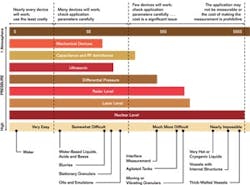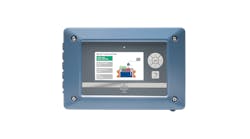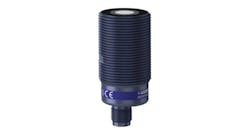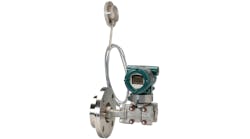Well, we haven't. And there are reasons for this. Mostly, the reasons are that there is no one kind of level, so there are many kinds of level measurement.
Wait! Level is just the top of a liquid or solid or powder in a tank or vessel, right? Not really.
The right hand side of the chart is where things get really interesting. The chart is based on technical difficulty. That is, how hard it is to acquire an accurate measurement and do it repeatably.
What the chart doesn't show you is whether you should make the measurement or not. That's a decision that is based on several factors.
First, do you absolutely need that level measurement to control your process? If the answer is yes, it doesn't matter how technically difficult it is to make the measurement, you will figure out some way to do it.
If the measurement isn't exactly necessary, but it would be very nice to have it for control or optimization purposes, it comes down to how much it will cost to make the measurement and maintain the instrumentation over time. If the cost is very high, you may decide it isn't worth making the measurement based on the available technology.
In either case, there will be some level measurements that are either absolutely necessary or very nice to have that will be on the extreme left of the chart. At this point you have to decide if an instrumented measurement is necessary, or just having Jack from Maintenance drop by the vessel once a shift and look inside will do. "Yup, the level is fine." That's a measurement, too.
We're going to look at a few examples from the "Dark Side" of the Level Measurement Continuum.
Tickle.
That's what they call it. It is one of the most dangerous industrial chemicals. Its real name is titanium tetrachloride, TiCl4 and it is used to make titanium metal and white pigment. Titanium tetrachloride is a yellowish liquid, but it hydrolyzes into titanium dioxide (TiO2), a thick white goop, and hydrogen chloride gas (HCL g) in the presence of water. By water, I mean water vapor, humidity, the sort of water that can be found in an industrial vessel. Titanium tetrachoride also fumes. The hydrogen chloride quickly becomes hydrochloric acid (HCI).
You would think that the level of tickle in a vessel, being a clear-to-yellowish liquid, should be a relatively easy measurement. But it is not.
If tickle stayed a clear-to-yellowish liquid, the measurement would be simple. Unfortunately, it is not possible to remove all the water in the air inside the vessel, and what water there is, even humidity, quickly hydrolizes the titanium tetrachloride into TiO2 and HCL gas. What water is left quickly turns the HCL into hydrochloric acid. The TiO2 is thick, sticky and ropey. It clings to surfaces and hardens on them. Standpipes fill quickly with TiO2 and become useless. Sight glasses fail almost instantly. The HCL gas and hydrochloric acid corrode the interior of the vessel and make pressure taps unworkable.
Capacitance or RF admittance devices coat up, and even those that are supplied with anti-coating circuitry can have real problems making the level measurement. The same thing is true with time domain reflectometry (TDR) radar devices. Ultrasonic level devices are unreliable because the liquid fumes and the ultrasonic signal can be lost in the vapor or see a thermocline in the vapor space as the level rather than the actual level.
Frequency Modulated Continuous Wave (FMCW) or pulse non-contact radar has some chance of working, provided the TiO2 doesn't coat the sensor horn or process seal.
Weighing the tank isn't an option either; a load cell can't tell the difference between the coating in the tank and the level itself because the coating isn't necessarily stable. The more throughput through the tank, the more likely it is that the coating will increase as the level goes up and down.
Even nuclear level gauges aren't a panacea for this measurement, because they need to be able to read through the tank wall and through the coating, through the air, through the coating again, and then the other tank wall. This may require a nuclear source that is significantly larger than plant safety policy may allow. Also, the coating changes will cause apparent "drift" in the measurement, adding to the difficulty of making the measurement at all.
So what do you do? If you really need this measurement, and often you do, you will need to pick methods that have a chance of working with some acceptable level of maintenance. If it were me, I'd use two different types of level technology, say, FMCW radar and nuclear level gauge, to avoid common mode failure. When the readings of the two instruments diverge, it's time for maintenance to go check the devices.
No, Really? Orange Juice?
Orange juice, grape juice, and apple juice are all stored in very large chilled storage tanks. These tanks are built and maintained to 3A sanitary standards, so it becomes necessary to use level technologies where there are no interstices or openings that could plug and become havens for bacteria. This tends to rule out most contacting technologies.
These tanks are vastly large, and that rules out load cells and measuring the tank's weight.
Since most people have trouble with food irradiation, even the thought of using a hugely less powerful nuclear source is forbidden by most food products companies. In the middle 1980s the largest American brewer was considering using nuclear density gauges for measuring wort density in beer until the CEO caught wind of it. "Nobody's putting radiation in MY beer," he thundered, even though there was no chance of that happening. Besides, the tanks are so large that special insertion sources would need to be crafted.
This leaves ultrasonic and radar level gauges. Fruit juices foam, and the foam has density differentials from the top to the liquid level itself. This means that the echo for ultrasonic level and pulse radar level gauges tends to come from somewhere in the foam, not necessarily from the liquid itself. That means that the measurement may be inaccurate by perhaps as much as an inch or so. This doesn't sound like much until you realize that a one-inch error in a 100-foot diameter tank is a very large amount of juice. This is just not acceptable for inventory control.
FMCW radar appears to work pretty well in most cases, but even there, foam has been reported to be a problem.
Even orange juice isn't a simple measurement.
Agitator Spin and Spin. Big Prop Go Round and Round!
Sometimes the level measurement that you need just doesn't exist. Consider the agitated reactor vessel. When the agitator is turned off, there is a horizontal fluid level. But when the agitator is turned on, there is a vortex, sometimes all the way to the tank wall. What's the level in the tank when there's a vortex?
So the level measurement you want is actually "what the level would be right now if the agitator wasn't on." That's not as easy as it sounds, and if it doesn't sound easy at all, you are right.
What do you do? First, you have to find a way to measure the level when the agitator is off. In most cases in agitated tanks, you can't use insertion devices, such as capacitance or admittance or TDR radar instruments. You can, if you designed the tank for it, use load cells or a pressure transmitter. And the weight or pressure is not going to change the same way as a down-looking level device would change when the agitator is turned on. Vibration will affect the measurement, though. You can use a radar device, either FMCW or pulse, or in some cases an ultrasonic sensor. However, these devices are problematic because you are trying to measure a level that goes away when the agitator turns on. Best bet is to measure the weight of the reactor and its contents and tare out the weight of the tank itself.
Powders and Solids, Oh My!
Measuring the level of powders and solids is fraught with difficulty. The coarser the particle size the harder to determine what the actual level is, and depending on the way vessels are filled and emptied, it may be difficult to see a horizontal "level." Angle of repose issues and rat-holing make it difficult to decide what the level actually is too. Recent designs using multiple sensors have made it easier to generate 3D mappings of the level surface and process those mathematically to determine the level. Many applications in bins and hoppers use high and low level switches, because they are simple and reasonable to maintain.
An excellent reference for measuring the level in powders and bulk solids is the Solids Level Measurement and Detection Handbook by Joe Lewis, published by Momentum Press in 2012 and available at www.momentumpress.net or at www.amazon.com.
Rags! Get Your Rag Layer Here!
Another really difficult measurement involves a liquid-liquid interface with a rag layer.
All liquid-liquid interface measurements are difficult. It is necessary to use some physical property to detect where the actual interface is. For example, capacitance, admittance and radar methods all depend on sensing the change in the dielectric constant of the two materials. Nuclear level gauges use the bottom level density and are calibrated to assume that the top level density is fixed, as if it were an air or vapor layer.
All of this is thrown into the impossible-to-measure bucket when there is a rag layer. A rag layer is a miscible layer where the material in the bottom level mixes irregularly with the material in the top layer. Oil/water is one such. Others occur in sludge level applications and in similar measurements.
For years, the only practical measurement has been through the use of a sight gauge because the human Mark I Calibrated Eyeball is the best way to estimate the actual interface, rather than the rag layer.
Unfortunately there are many applications where the human eyeball isn't capable, either for process reasons or safety reasons.
Recently, the use of digital cameras and mathematical modeling has been applied to this measurement with some good results. A camera is focused on the sight glass, and the signal is digitized and sent to a processor that operates mathematically on the signal, determining the actual interface from the rag layer.
The Dark Side, But No Cookies!
As you can see, there are measurements that are just plain hard. In some cases, the cost to make the measurement must be calculated in light of the need for the measurement itself.
This is one of the areas of automation where the instrumentation engineer earns the big bucks.






